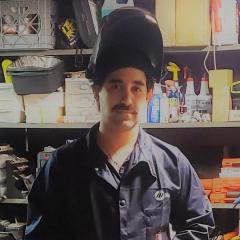-
Recently Browsing
- No registered users viewing this page.
-
Topics
-
Posts
-
I've managed to adjust it. I'm going to try and explain it as well as I can with my limited horology knowledge but I hope it helps someone in the future. There is a cam to the right of the front plate as shown in the picture. As the clock ticks along, the pin indicated in the gear comes around and slots into one of the silencer cam gaps, turning the cam. The pin completes a full rotation in 2 hours. To adjust the cam to start at the right time set the clock to just before 7. I did 6:45. Then I turned the silencer cam anticlockwise, which spins freely, until it pushed the silencer lever up and was placed just before the drop. Just before the 7AM indicated in the picture. All I then had to do was progress the hands to 7-7:15which made the pin slot into the silencer cam gap and turn the cam so the lever comes down again, unsilencing the clock. That was it. If anyone comes across this issue again I'd be happy to assist. Thanks again to everyone that helped.
-
Now I'm completely confused, it would appear that the epilame is oleophobic as @Marc states: This oleophobic behavior can be seen as beading of the droplet (as above) which stops the oil spreading which is supported by what we observe on treated/untreated cap stones (for example), but as @VWatchie states this should make the drops more mobile, and not less mobile which is the opposite of what we want. In fact this beading and high mobility are desirable properties in things like smart phone covers, see below. I am fairly sure that epilame doesn't make the droplets more mobile, so maybe its a strange coating with dual properties that are both oleophobic and cohesive/adhesive resulting in low mobility?? This may explain the high price??
-
By nickelsilver · Posted
The description there is exactly how it's done, and it's very well written! -
By HectorLooi · Posted
Would it be correct to say that the stronger the mainspring, the thicker the oil should be? So for a fusee mainspring, should a thick grease be used? -
I started on pocket watches as they are easier to work on than wristwatches. Many had gold cases, which is why there are so many movements for sale. I was always on the look out for cases, for as Nickelsilver says, a 16s movement will fit any 16s case* (with tweaks to the stem). I also started hand winding mainsprings, before I had winders. It can be done without damage, but it's quite hard on the fingers. But you can make homemade winders, see here * some movements, eg "railroad grade", have a setting lever on the edge of the dial at about the 1 -2 o'clock, so need a special case.
-







Recommended Posts
Join the conversation
You can post now and register later. If you have an account, sign in now to post with your account.
Note: Your post will require moderator approval before it will be visible.